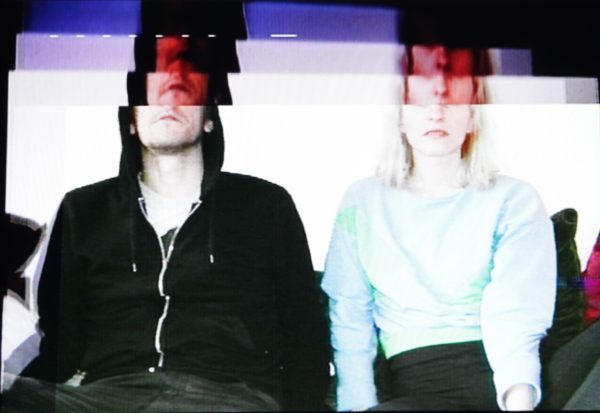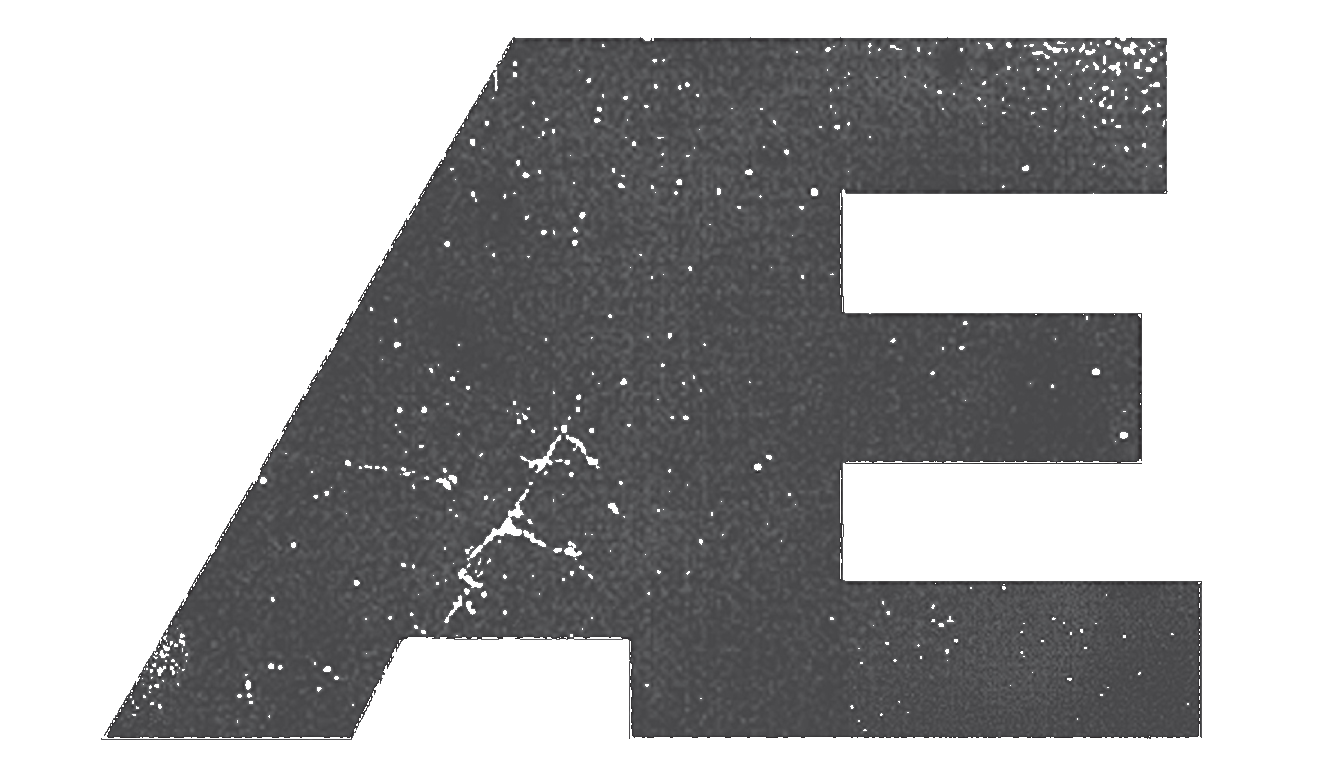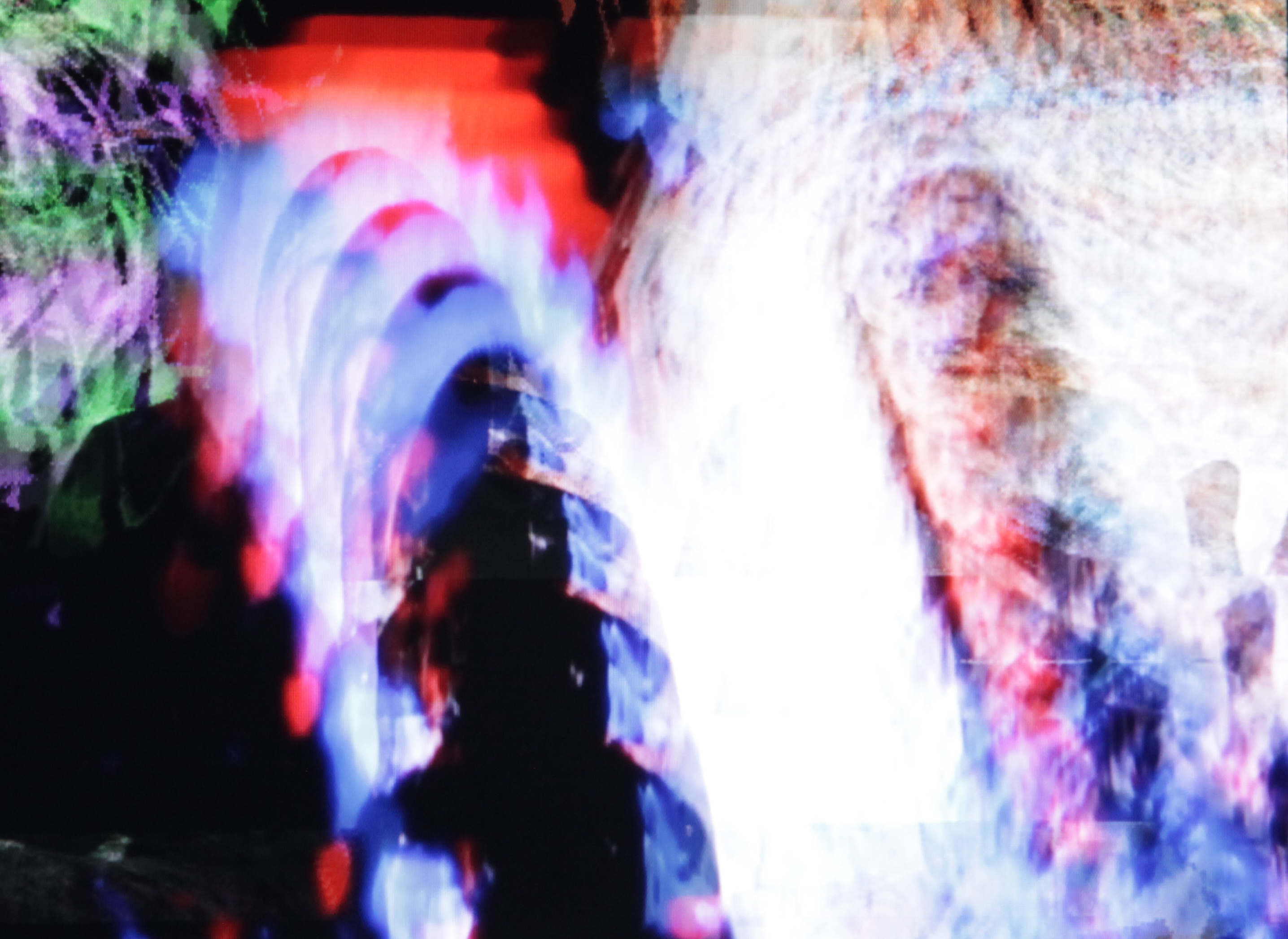Soft as Snow’s debut album Deep Wave, has an inconspicuous start. A kick-hat-snare beat swings the listener into the album, luring its audience into a false sense of security. A feminine voice strains against the abstract electronic landscape that swirls like a maelstrom through an abject noise, delivering the listener finally to a humid sonic landscape on the other end. By the time the third track on the album “Drip” commences you’re completely entrenched in this new world and the sound of Soft as Snow has coiled itself into a ball under your skin. It’s a mesmerising sonic noise giving away to something primal, something tender and raw, yet refined specifically as such.
Oda Egjar Starheim and Øystein Monsen are Soft as Snow. The electronic-indie music duo from Norway, who reside in Berlin, have been making records together since 2015 and after two EPs on UK label Houdstoooth, they’ve ushered in 2018 with a debut album on the same label. Deep Wave is a concise idiosyncratic body of work that lies on the edges of Noise, DIY and Techno with provocative results. Noisy synths, drum machines and guitars establish a thorny bed of peaks and troughs from which Oda’s entrancing voice lures you towards rocky enclaves.
Oda, a performance/visual artist, musician and vocalist and Øystein, a percussionist and visual artist, started making music together after Øystein was asked to film a performance of Oda screaming through the streets of Oslo for a video piece. Øystein, whose musical background lies in the noise/rock scene in Oslo, started playing music with Oda. They started out playing in o Oda’s installations together, before officially adopting the name Soft as Snow and refining it as its own independent musical project.
Fortified in Oda’s performance art background and Øystein’s sonic cues, Soft as Snow developed a sound that harnessed the immediacy of a live performance with the power of machines. With a couple of tentative steps in the direction of the studio with the two EPs Glass Body and Chrysalis, Deep Wave comes as the most realised adaptation of their sound to the recorded format yet. Although co-produced and partially mixed by Triangle records’ WIFE, Deep Wave has freed the group from the constricting reigns of the controlled studio format, tapping into that primal urgency that they usually communicate through their live shows.
There’s a richness to their work that clearly has its roots in an array of influences, spanning technique, art and even literature, channeled through the individual personalities and merging through their working methods. Where and how these influences merge is unknown, and with an upcoming show for Den Gyldne Sprekk, the opportunity arose for us to find out. Serendipitously, we find Oda and Øystein at Oslo House in Hackney Wick, London when we call them up. They have a show in Stoke Newington, and they seem relaxed. They appear in a more hi-definition versions of themselves from the album cover with its distorted RGB curves and its from there we start the conversation.
Let’s start with the cover art. What inspired the cover.
Øystein Monsen: I guess it’s more the technique than an actual influence. It’s made using an old Amiga computer. We had the idea of running all the visuals through it.
And that gave it that distorted effect?
Øystein: Yes and it’s kind of a mix of live video feedback and some key signals messing everything up. It’s the same technique we used for the video (Pink Rushes) too.
Who is responsible for the look of it?
Oda Egjar Starheim: We made it together as well as the press photos and the videos. It’s a very slow, old-fashioned technique. It took a very long time, but it’s nice because everything happens live and its unpredictable and that relates to how we make music. It’s all improvised and you just tend to go with what feels right in the moment.
Yes, there’s a performance aspect to everything you do. Oda, does your background in performance art inspire this improvisational approach?
Oda: In terms of making music, how we make the music is very jam-based. It’s not sitting down and having a singer-songwriter moment, it’s the opposite. Perhaps this subconscious way of making a work is something that I’ve always been doing, which followed me into music. When I started making music, it was actually within performance work, so it was about creating sounds within installations. After a while I started using my voice inside these installations, albeit in a very experimental way and that’s how it evolved.
Were there any performance artists you were influenced by at this time?
Oda: Yes, performance-wise I was very inspired by extreme artists, like Marina Abramovic. But visually, I was more influenced by artists like Pipilotti Rist.
You mention visual influences. Is making music a visual thing for you?
Oda: It’s perhaps more about energy and moods. It’s not so much about visuals; it’s more about feeling. For me it’s quite primitive and quite primal.
And is that how you recorded the album, in that primitive, primal way?
Oda: Yes very much. And we also decided to keep a lot of the recordings from the initial jams. So some of the tracks are just jams that we edited down.
Listening to the first EPs and then the album, do I detect a slight evolution in your work? I don’t want to say its tamer, but perhaps more controlled. Would that be an accurate description?
Øystein: Yes, I think we got closer to keeping the music how it was conceived, in a way. We’ve always worked like this, but in the first two EPs, we created the songs and then recorded it and was more controlled in that way. For the album we didn’t re-record much and just used the initial tracks.
Oda: We re-recorded some vocals, because we wanted to have more refined lyrics for some of the tracks. Most of the instrumental tracks are from those initial jam sessions. We also mixed half of the tracks ourselves, so we had full control until the end. Sometimes I think the sound can change a lot in production and mixing.
Øystein: When we worked with an engineer, on some of the tracks, he made it cleaner and took away some of the rawness. We discovered that we wanted to keep that rawness.

Did you go into the album thinking you wanted to get that sound out of it, or was that just the result of the recording process?
Oda: I think with the setup we have it predetermines the sound. We didn’t use any software. We work with analogue instruments and some of them are very lo-fi. It does shape the sound.
Øystein: When we record the vocals, we just play the music live through the PA, so you have that energy (throughout).
Oda: On the previous EP we went into this very fancy studio and recorded the vocals with really good equipment, but we don’t think it made it any better, we think it kind of lost some of the energy. Because I’m used to, and familiar with a certain setup, I sound more like myself, the way I’m supposed to sound. When we start changing the microphone or the compressor, it immediately changes the voice and the way it’s shaped.
I know you prefer a live hardware setup. What was the biggest influence in terms of a machine that might have shaped the outcome of this album?
Oystein: Maybe the (Roland) Handsonic.
Oda: Really? (Laughs) I would’ve thought the little mixer.
Øystein: O yeah, because that’s what made the distortion.
Oda: We have a separate mixer and it’s just to add distortion.
What’s it called?
Øystein: It’s a Fostex mixer with just jack inputs. I’m not sure what it’s called.
Oda: I think that was very important. Obviously the Juno is very important. But to be honest; live, now we have a different setup, because before we had a 100 kilos of equipment and that is very tiring when you fly. So now we’ve been moving and changing a bit so in the live setup now, we actually include a computer.
Does the live sound differ much from the album?
Øystein: It’s an extension of the album sound, where I think it’s becoming even more raw.
Oda: For instance I play very little guitar on the album, and on the first EPs I played loads of guitar. So live I play a bit more and Øystein focuses more on the live drumming with the Handsonic.
Øystein: I think the Handsonic is really important for our sound, because it uses all these cheesy sounds that can be very interesting when you use the effects on it and we use it a lot on this record.
Øystein, you come from a noise/rock background in terms of drumming, but is there anything outside of music that informs your rhythmic impulses?
Øystein: I’m not sure where it comes from, but my whole approach to music is rhythm, and it’s more about the actual sounds than the melodies.
Is it the same as in Oda’s case, where it becomes this subconscious thing?
Øystein: Yeah, that’s where I get the most energy out of it, in the drumming.
Was there anything that inspired Deep Wave in terms of literature or films?
Oda: We were discussing this a little earlier in fact. In terms of literature, we were both really interested in magical realism. We’re both really big fans of (Haruki) Murakami and Gabriel García Márquez. Obviously in terms of lyrics, it happens on a very unconscious level, and I like that it perhaps fluctuates between something quite recognisable, and sometimes it feels more abstract like a picture or a mantra that’s corresponding to what’s happening in the music, than being the lead in the music.
Murakami is a great example, because he creates these really fantastical worlds, that seem like they stem from something real.
Oda: Yes, you are just kind of led into it, because it feels very close and then he just takes you somewhere. You are easily convinced in a way.
Are you conscious of it when doing it in terms of lyrics?
Oda: Yes, very actually, but is depends because some of the tracks are just kept like they are, like a stream of consciousness and some of the tracks we wanted to have more refined lyrics. So I needed to go into the track again and inhabit it to find more words, but then it’s really important for me to stay in the landscape of the feeling that’s been created. I always try to not be literal and more open in the lyrics.

How much influence does the label have on the ultimate sound of the record beyond just facilitating it?
Øystein: I guess they provided more inspiration in terms of Techno, as a Techno label.
Oda: It’s hard to know actually. The Techno reference was there before we even started working with them. The first EP was already done when they signed us. But we don’t really know, if we’d been working with an indie pop label, we might have sounded very different today.
Øystein: Through the process, they wanted to focus more on the pop side of the records, and take away some of the more noisy, weird elements. We didn’t want that, so it was kind of a long process.
Oda: There’s been a few discussions. (Laughs)
Øystein: We’re kind of the weird act on the label. Now with this album it makes more sense because I feel that we have found a middle ground.
Oda: Our production is more lo-fi than the other artists on the label. Now I feel like we make more sense on the label than we did before. We are more true to our sound and our vision and although they might not have been so sure about it through the process, in the end they totally got it.
So it was more like the label changing around you, than you having to adapt around the label?
Oda: Yes. We’re stubborn Norwegians.
Øystein: Because of the material on the album, it’s really important how we present it, from the track listing and the interludes. When they heard the final version, they really loved it, but in the process there were a lot of discussions.
Oda: But, that’s just the way it is in these relationships. You just want it to be the best you can do, and sometimes there are different opinions about what is best. We consciously make decisions that are technically wrong, like keeping errors that we know might provoke other listeners, but we feel it’s important in how we make music.

